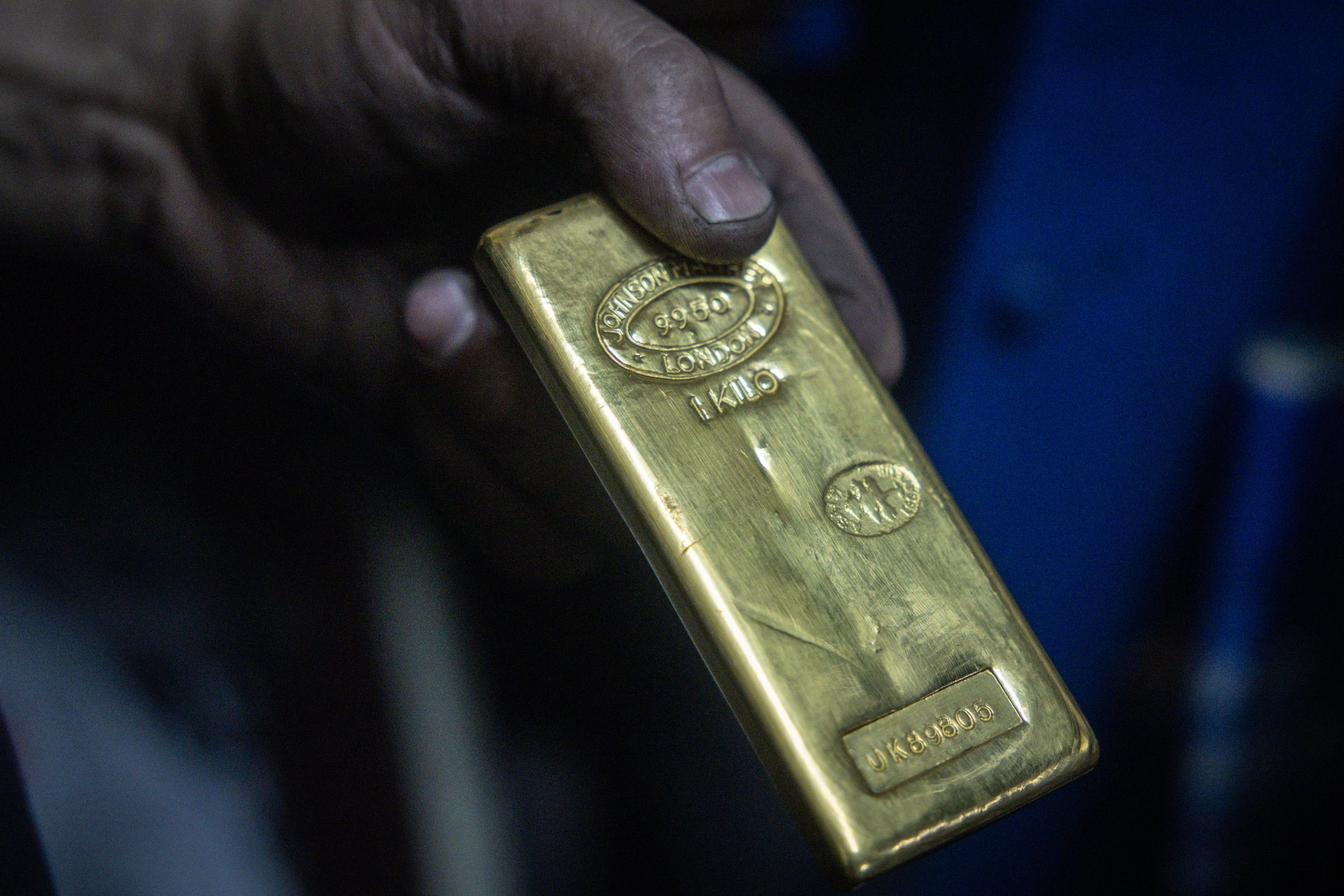Gold is surging and it's freaking out the markets. Here's what to know
A perfect storm of geopolitics has sent gold prices blasting past $3,500 as investors flee to safety

Gold prices blasted past $3,500 an ounce for the first time early Tuesday, a record driven by a perfect storm of geopolitical turmoil and strategic central bank moves.
Here’s what to know.
Why is gold rising so much?
At the heart of gold’s surge is the escalating trade war and President Donald Trump’s intensifying tariff push. Tariffs tend to cause inflation, while gold tends to hold its value in inflationary times.
Trump’s attacks on Federal Reserve Chair Jerome Powell have also deepened fears about the central bank’s independence — unsettling investors already wary of policy whiplash that’s rattled bond markets and pushed major indices steeply down since the beginning of the year.
As stocks and bonds reel, money is flowing into gold, the market’s traditional safe haven.
Central banks are amplifying the momentum, too. China has tripled the share of gold in its foreign reserves to 8% and imported roughly 700 metric tons from the U.K. in the past two years alone. The move away from U.S. Treasuries is widely seen as a hedge against sanctions and currency instability — and part of a larger global recalibration.
What has it meant in the past when gold rises like this?
Big moves in gold have historically signaled deeper instability just beneath the surface. The price of gold often rallies as confidence falters — be it during the inflation crisis of the 1970s, the global meltdown of 2008, or the pandemic panic of 2020.
This year’s surge — up more than 30% — is flashing the same warning lights. It likely reflects a mix of slowing global growth, concerns over stubborn inflation, a weakening dollar, and growing distrust in monetary and political leadership. With the dollar recently falling to a three-year low, gold’s appeal has only grown: When faith in fiat falters, investors reach for what feels real.
The inverse relationship between gold and the dollar becomes especially powerful in moments like this — when policy looks shaky and risk becomes much more difficult to price.
In such moments, gold is both a hedge and a protesting voice.
What are analysts saying?
Wall Street is racing to keep up with the price shift. Goldman Sachs (GS) has hiked its year-end forecast for gold to $3,700, citing trade turmoil and spiking volatility. Other firms and banks have followed suit.
In a recent note, UBS (UBS) strategist Joni Teves said, “In the current macro environment, we think the ratio of gold positions to total funds’ assets has the potential to exceed the levels reached in 2020, though may not necessarily get to the peak in 2012/2013.”
Inflows look to be increasing dramatically. Last week, investors poured $8 billion into gold funds — double the peak weekly inflows seen during the COVID-19 pandemic — pushing the four-week average to $4 billion, according to Bank of America Global Research (BAC).
“Gold has again moved to yet another record, with its safe-haven reputation shining bright,” analysts at RBC Capital Markets (RY) told The New York Times. “Amid rising doubts over Fed independence, gold continues to draw buyers as a refuge — especially because, unlike most assets, it isn’t tethered to the U.S. dollar.”
While some warn that gold’s rally may be peaking, the broader view is clear: As long as global tensions simmer and policy whiplash rules, gold’s shine isn’t fading anytime soon.